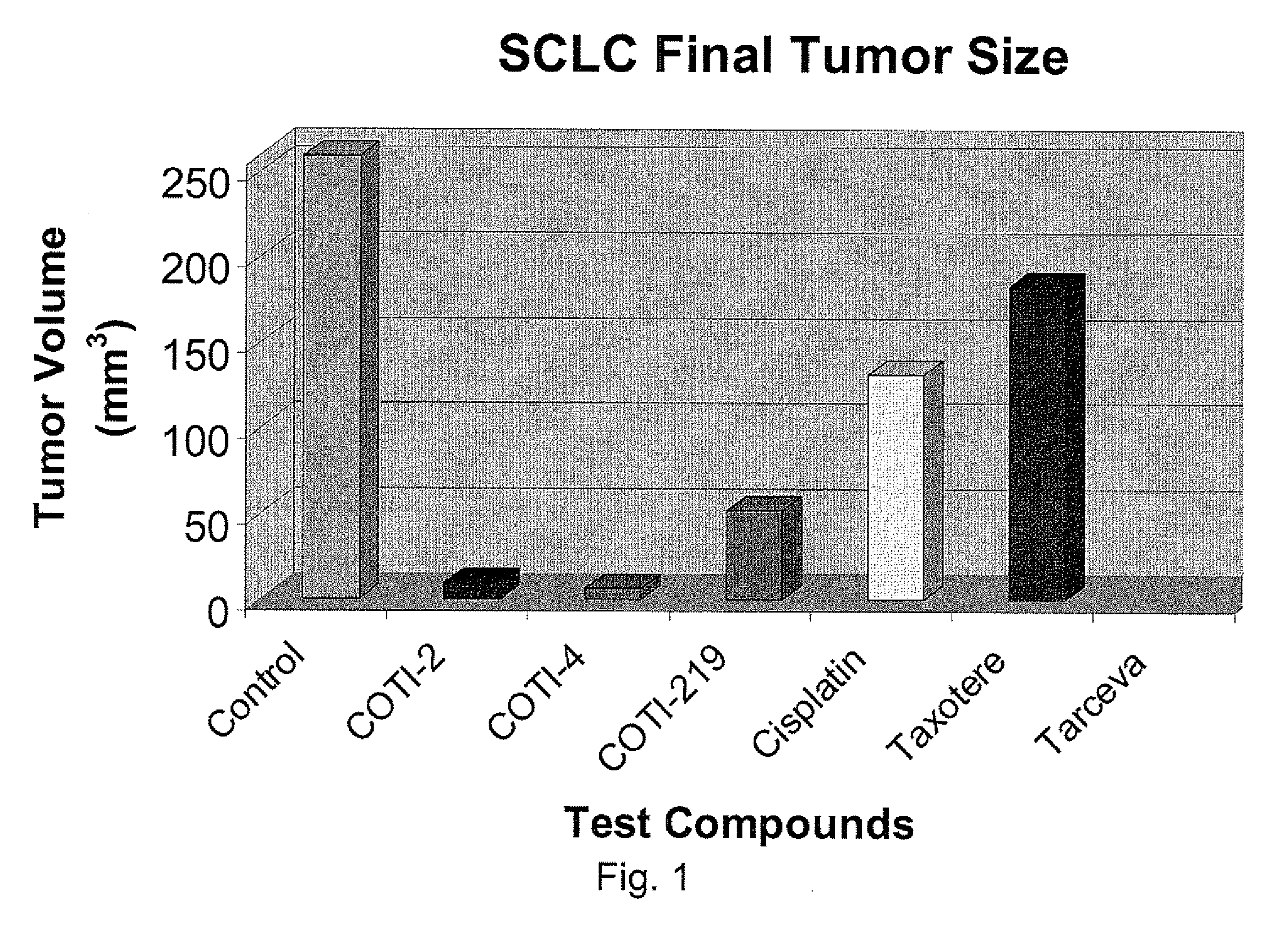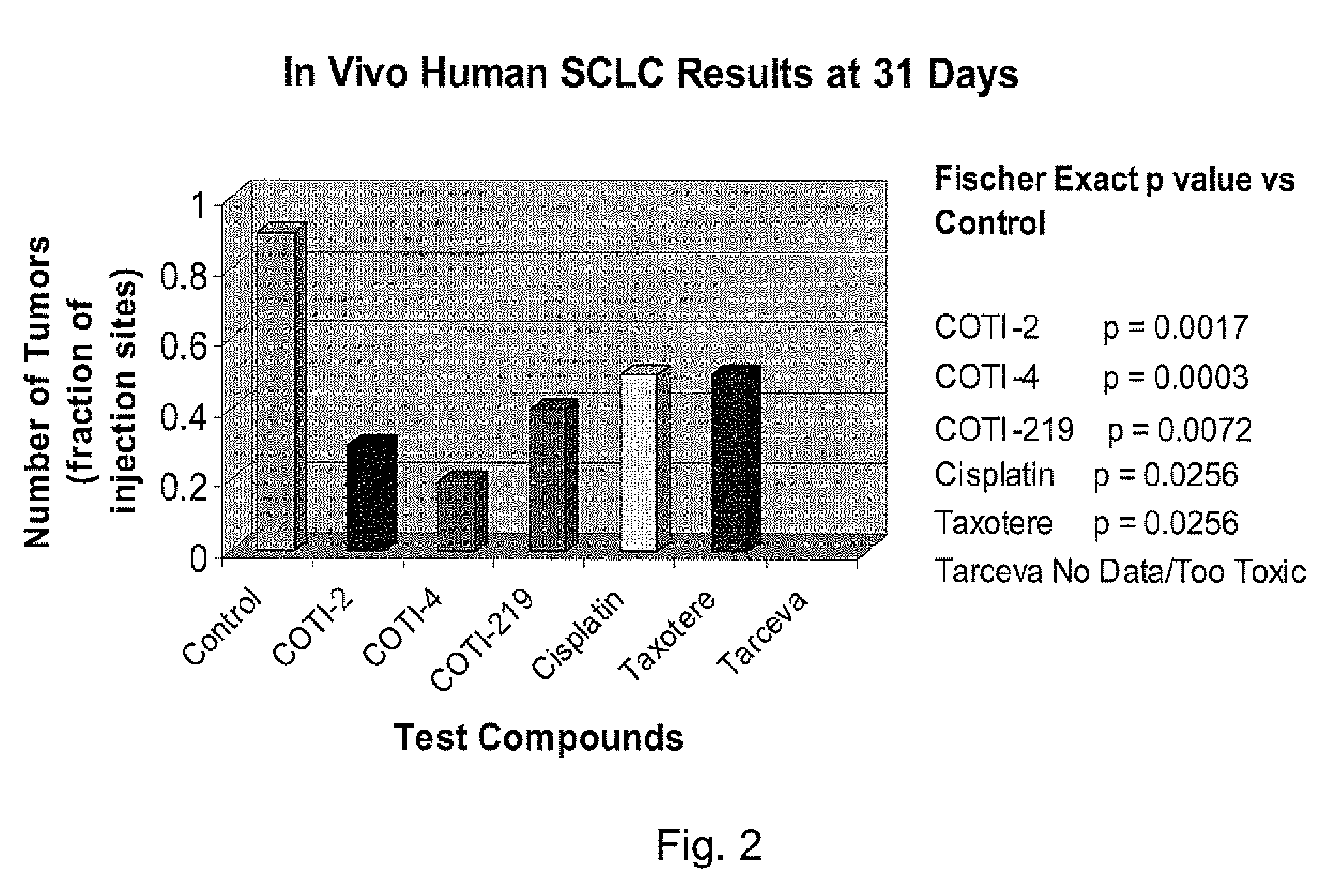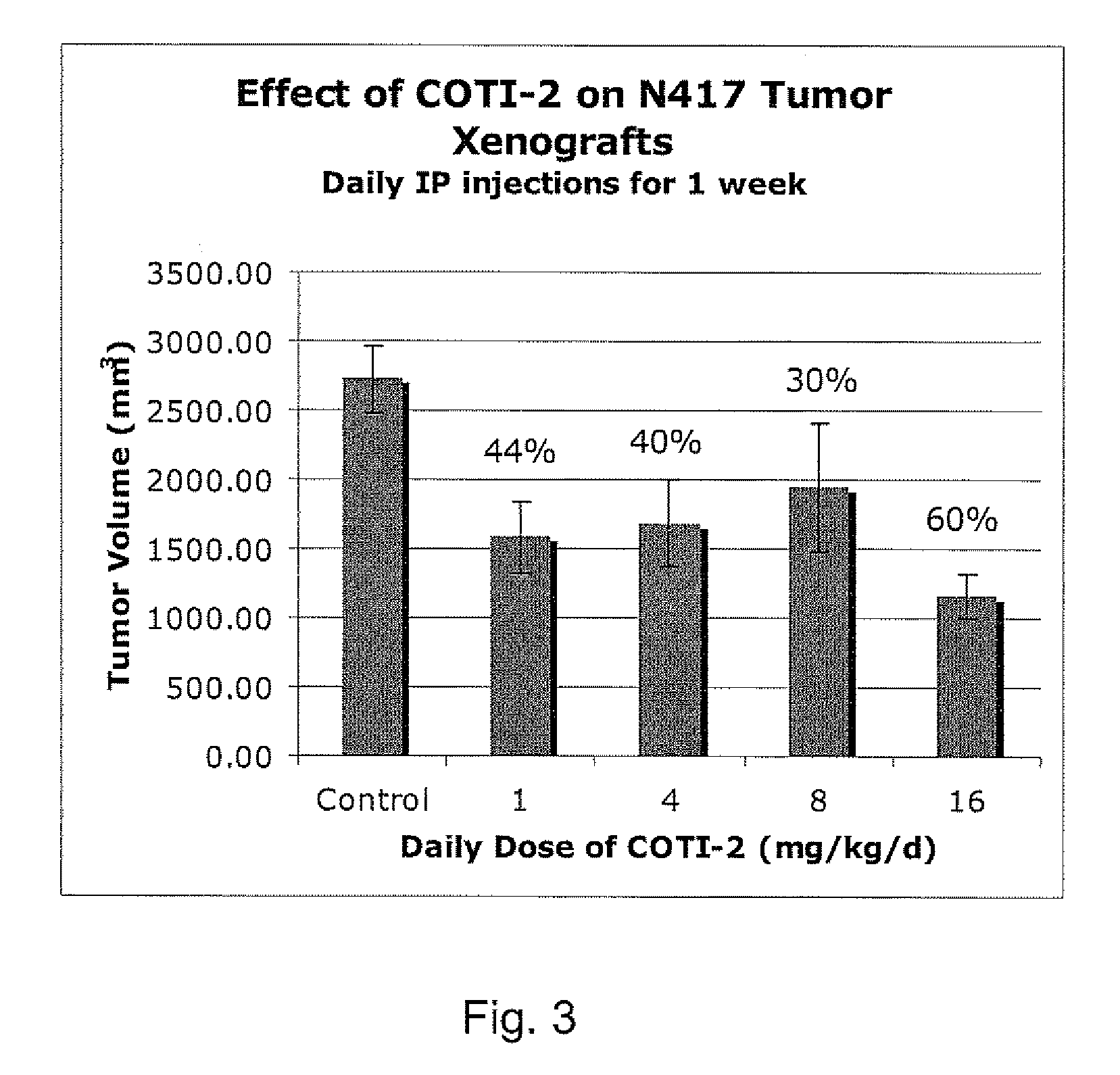Inhibitor Compounds and Cancer Treatment Methods
- Summary
- Abstract
- Description
- Claims
- Application Information
AI Technical Summary
Benefits of technology
Problems solved by technology
Method used
Image
Examples
example 1
In-Silico Assessment of Properties
[0228]An in-silico assessment of the properties of compounds according to the present invention was performed using the CHEMSAS® computational platform. CHEMSAS® is a robust proprietary computational platform for accelerated drug discovery, optimization and lead selection based upon a unique combination of traditional and modern pharmacology principles, statistical modeling and machine learning technologies. At the centre of the CHEMSAS® platform is a hybrid machine learning technology that may be used to: find, profile and optimize new targeted lead compounds; find novel uses for known compounds; and, solve problems with existing or potential drugs. In using the CHEMSAS® platform, first a therapeutic target was selected, in this case cancer and more particularly Small Cell Lung Cancer. The second step involved the design of a candidate molecule library containing thousands of potential compounds through the assembly of privileged molecular fragment...
example 2
In Vitro Efficacy Against Various Cancer Cell Lines
[0232]To assess the efficacy of compounds according to the present invention in the treatment of cancer, in vitro activity expressed as IC50 (represents the concentration of an inhibitor that is required for 50% inhibition of its target, in nmol) was measured for several cancer cell lines using standard methods for such tests known to persons skilled in the art. Briefly, cells were plated in plastic tissue culture plates and grown under standard conditions for each cell line, in carbon dioxide / oxygen atmosphere in plastic tissue culture plates, in the presence of COTI-2 or COTI-219 compounds at 35° C. for 3 days. Control cultures were treated with vehicle minus compound. Cells were counted after 3 days in culture and at a cell density of no more than 80%. The following cell lines, obtained from the National Cancer
[0233]Institute, were tested: human SCLC cell lines DMS153, DMS114, SHP77; human NSCLC cell lines H226, A460, A560; human...
example 3
In Vivo Efficacy in SCLC Treatment
[0234]The nude mouse model of human SCLC was used to evaluate the in vivo efficacy of compounds of the present invention in comparison with several known chemotherapeutic agents. Nude mice were obtained form the National Cancer Institute and the SHP-77 human SCLC cell line was chosen for metastatic tumor xenografts. The control group consisted of 10 animals, each of which were administered bilateral thigh injections of a prescribed volume of tumor cells. There were 6 treatment groups, each containing 5 animals: COTI-2, COTI-4, COTI-219, Taxotere® (docetaxel), Cisplatin® (cis-diamminedichloroplatinum) and Tarceva® (erlotinib) The therapeutic agent was administered by intraperitoneal (IP) injection on alternate days beginning on Day 3 post tumor cell injection. Each animal in a treatment group was administered bilateral thigh injections with the same prescribed volume of tumor cells as the control animals. Treatment continued for 31 days, following wh...
PUM
| Property | Measurement | Unit |
|---|---|---|
| Temperature | aaaaa | aaaaa |
| Volume | aaaaa | aaaaa |
| Volume | aaaaa | aaaaa |
Abstract
Description
Claims
Application Information
 Login to View More
Login to View More - R&D
- Intellectual Property
- Life Sciences
- Materials
- Tech Scout
- Unparalleled Data Quality
- Higher Quality Content
- 60% Fewer Hallucinations
Browse by: Latest US Patents, China's latest patents, Technical Efficacy Thesaurus, Application Domain, Technology Topic, Popular Technical Reports.
© 2025 PatSnap. All rights reserved.Legal|Privacy policy|Modern Slavery Act Transparency Statement|Sitemap|About US| Contact US: help@patsnap.com



